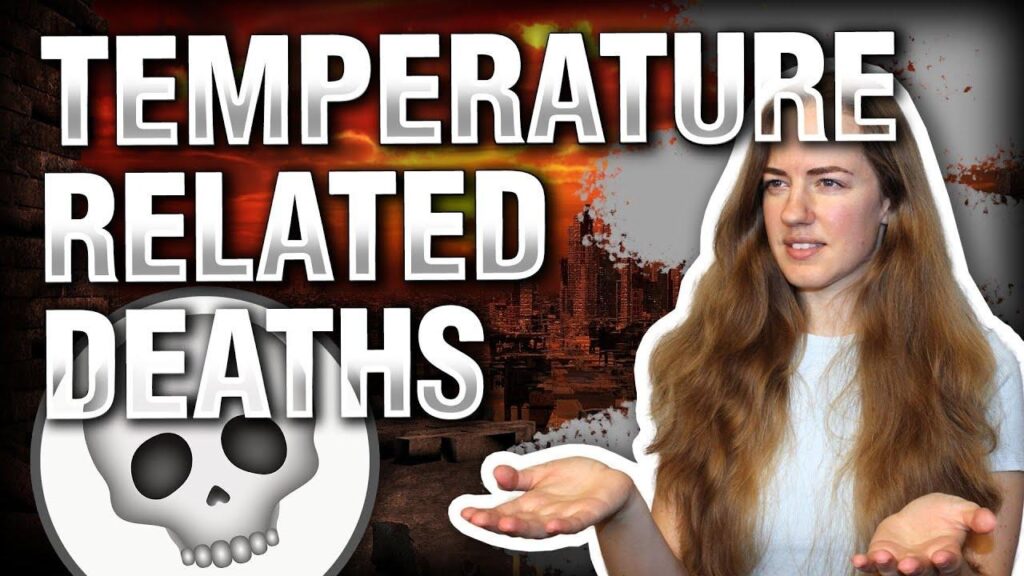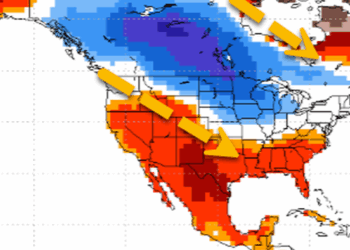
Relying on human ingenuity to effectively manage an ever-changing climate – either warmer or cooler – as well as long-recognized public health threats are the best ways to ensure the well-being of the planet and its inhabitants.
“The ingenuity of Homo sapiens at adapting to climate has permitted people to populate almost the entire globe from the freezing Arctic to the steamy tropics,” notes Dr. D. Weston Allen, lead author of a new CO2 Coalition paper supporting a proposed repeal of a US federal designation of carbon dioxide (CO2) as a pollutant.
“If we stick to doing what we do best – adaptation – we will continue to thrive.”
Citing nearly 400 references, the paper was filed as a formal comment by the CO2 Coalition with the U.S. Environmental Protection Agency in support of its proposal to rescind the regulation known as the Endangerment Finding.
Contrary to the “consensus” narrative on warming that equates increasing temperature to increased death, the data tell a much different story.
According to the FACTS, global warming likely will save millions of lives rather than lead to more deaths.
Globally, 10 to 20 times as many people die from cold as from heat.
Warming temperatures will lead to declines in deaths associated with cardiovascular disease, respiratory disease, and strokes, as all are closely linked to cold.
In the United States, thousands of early deaths are avoided annually by people moving from cold northern states to warmer southern states.
Famine and starvation have historically been the greatest climatological killer, and millions of these deaths will be avoided as a result of increasing food supplies from lengthened growing seasons and more CO2.
A recent study published in the journal The Lancet examined temperature-related deaths in 854 urban areas in Europe. They found a 10:1 ratio in annual excess deaths ascribed to cold (203,620) compared to those attributed to heat (20,173).

While the above results relate to Europe specifically, it can be safely assumed that much the same would apply to other continents.
As you’d expect, the high levels of death from cold primarily relate to geographical location and level of poverty.
Being a relatively warm and wealthy country, Australia is likely to have fewer deaths from cold, probably at much the same level as Spain.
It also depends on the level of mitigation applied in each country. For example, European countries tend not to utilize air-conditioning to the same extent as Australia.
Air-conditioning use is a cultural and practical norm in Australia due to its consistently warm climate whereas its use, for example in the UK, is historically low.
Australia has a high penetration rate of air-conditioning in homes and public spaces, which are designed to be built for hot weather.
In contrast, UK buildings are designed to retain heat, and the climate has historically been temperate, making air-conditioning a rare and expensive option.
An interesting extreme example is Antarctica, the world’s coldest continent.
Although there have been a few deaths from cold exposure in Antarctica within the past 50 years, most have been caused by getting caught in blizzards, falling into crevasses, or succumbing to the extreme environment during expeditions.
Nowadays, expeditions and scientific stations operate with much higher safety standards. They have taken steps to reduce risk and also lessen the impact of an unforgiving climate.
And that’s the example we need to follow. Instead of wasting trillions of dollars trying to change the climate, we need to spend money on adaptation and mitigation.
Needless to say, that won’t sit well with climate activists who are intent on causing fear and division – or the billionaire grifters using climate alarmism to make money from renewables.
We need to stand up to these people and make our voices heard.
Our children are being told that they are facing a fearful future and that needs to stop.

Thanks to Gregory Wrightstone, Executive Director of the CO2 Coalition (https://co2coalition.org), for the information they provided that constituted much of this article. Thanks also to Heartland Institute’s Climate at a Glance for the lead image and CartoonStock for the cartoon.
Note: the full CO2 Coalition Climate Change and Health report referred to in this article can be accessed via: https://co2coalition.org/wp-content/uploads/2025/10/Climate-Change-and-Health-2025-10-17-digital-compressed.pdf

















